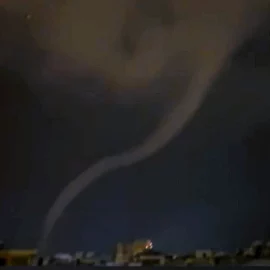
La Niña Impact on Cyclones and Weather in the United States in Winter 2025
Changes in atmospheric pressure caused by La Niña have a significant impact on the formation and path of cyclones and anticyclones.
La Niña causes easterly trade winds to strengthen in the tropical Pacific Ocean, which in turn causes:
Increased atmospheric pressure over the eastern Pacific Ocean and decreased pressure over the western Pacific Ocean.
Shift in the jet stream path: The jet stream shifts south, causing colder air over northern North America and warmer air over the southern Pacific Ocean.
Impact on Cyclones:
Increased frequency and intensity of cyclones over the northeastern Pacific Ocean and western North America.
Shift in cyclone path: Cyclones that typically move from west to east may shift south, causing increased rainfall in the southern United States.
Effects on Anticyclones:
Increase in the frequency and intensity of anticyclones over the eastern Pacific Ocean and western North America.
Shift in the path of anticyclones: Anticyclones that typically move from east to west may shift northward, leading to drier, sunnier weather in the southern United States.
In general, La Niña results in more active cyclonic activity over western North America and calmer weather over eastern North America. It may also lead to harsher winters in the northern United States and milder winters in the southern United States.
Founder and chief forecaster of the Pogodnik service. He has many years of experience in the meteorological service. He is the author of numerous scientific publications and popular articles about the weather.




